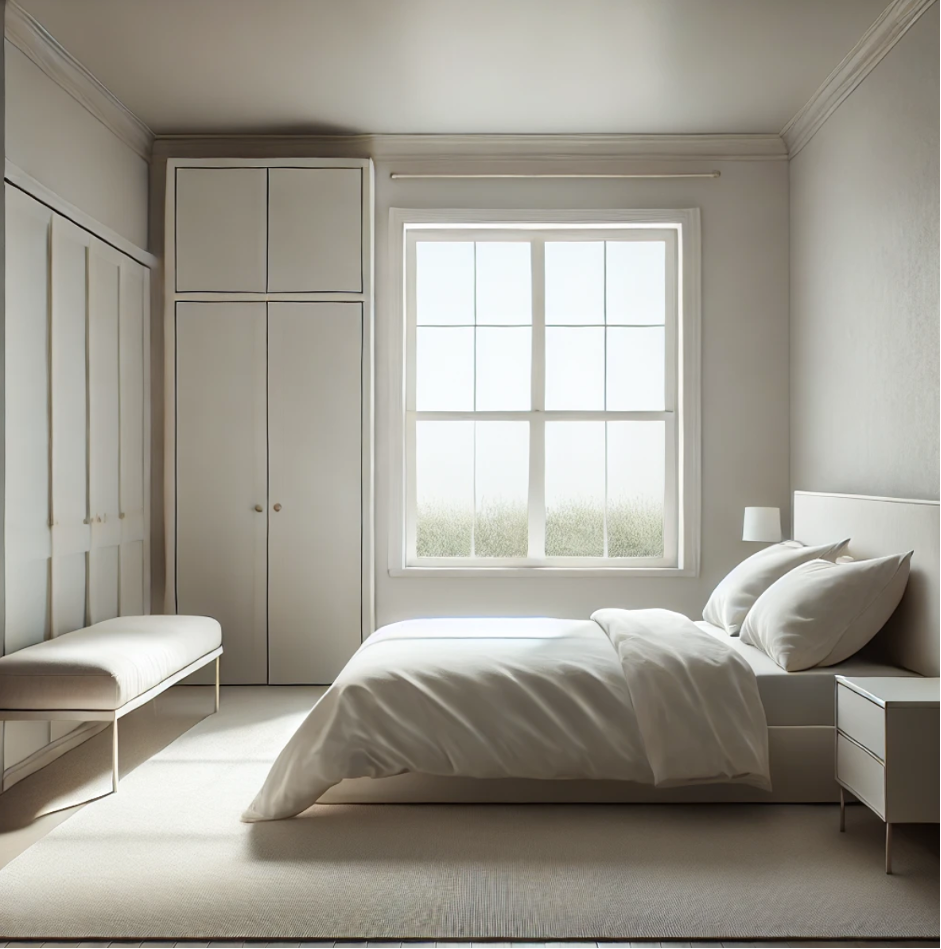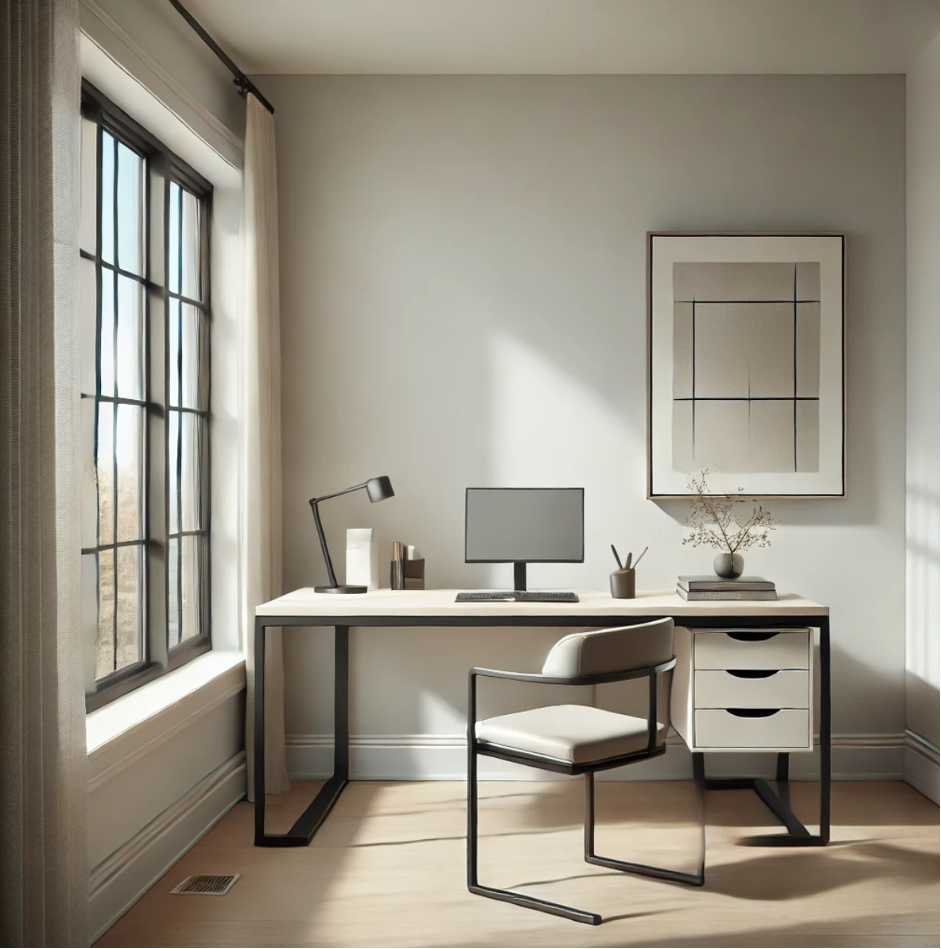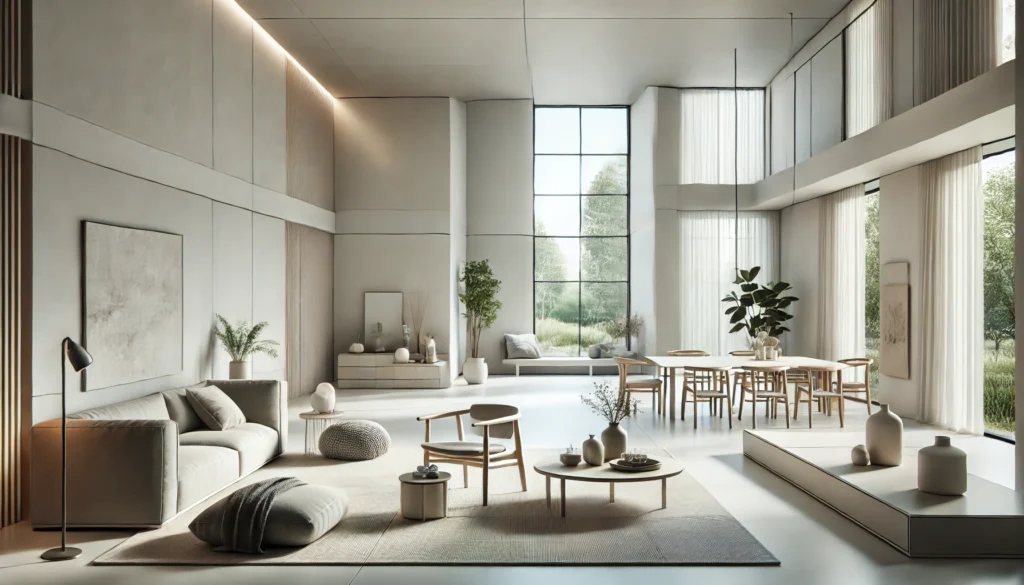In a world that often feels cluttered and chaotic, minimalist homes offer a refreshing sense of calm and balance. The concept of minimalism goes beyond just aesthetics—it’s a lifestyle that emphasizes intentional living, simplicity, and the careful selection of items that bring joy and functionality. A minimalist homes tour not only reveals the beauty in simplicity but also highlights how spaces can be transformed into serene sanctuaries by stripping away the unnecessary.
The Core Principles of Minimalist Design

Minimalism focuses on the idea that “less is more.” This design philosophy promotes clean lines, open spaces, neutral color palettes, and a restrained use of furnishings. Rather than filling a home with excess decor and clutter, the goal is to create a sense of flow and purpose in every room. Each element in a minimalist home serves a function, whether practical or aesthetic.
The architecture of minimalist homes is often defined by simplicity and functionality. You’ll notice the absence of ornate details and decorative flourishes. Instead, the focus is on natural materials like wood, stone, and concrete, which provide texture without overwhelming the space. Large windows are a common feature, allowing natural light to flood in and create a sense of openness, while also blurring the boundary between indoors and outdoors.
Exploring Minimalist Interiors

When touring a minimalist home, the first thing that strikes you is the sense of spaciousness. Even in smaller homes, the minimalist approach creates an illusion of more room by reducing visual distractions. Spaces are uncluttered and filled with carefully chosen furniture and decor that serve a clear purpose.
Living rooms, for instance, often feature a simple sofa, perhaps with a couple of geometric cushions, and a sleek coffee table. The walls are usually painted in neutral tones—white, beige, or soft gray—to create a peaceful backdrop. Art on the walls is minimal and often takes the form of a single large piece or small, carefully arranged collections of abstract works.
In the kitchen, the same philosophy applies. Cabinets are sleek and often handleless, creating a seamless appearance. Countertops are bare except for essential appliances and a few carefully placed items like a single vase or bowl of fruit. The dining area might consist of a simple table, often made of wood or metal, with chairs that complement the clean lines of the space.
Bedrooms in minimalist homes are the epitome of serenity. There is no excess furniture—just a bed, a couple of nightstands, and perhaps a small bench or chair. The bedding is often white or in light, calming hues, contributing to the room’s peaceful atmosphere. Closets are typically hidden behind seamless doors to maintain the clean look of the space.
The Psychological Benefits of Minimalist Spaces

One of the most appealing aspects of minimalist home design is the psychological benefits it offers. Living in a clutter-free environment can reduce stress, improve focus, and foster a sense of calm. A minimalist home eliminates the overwhelming feeling that can come from too much “stuff” and allows homeowners to breathe easier, both physically and mentally.
Research has shown that cluttered environments can contribute to feelings of anxiety and make it difficult to relax. On the other hand, minimalist spaces, with their emphasis on open, airy rooms and a lack of unnecessary items, promote mindfulness and a sense of order.
Minimalism as a Lifestyle

For many, adopting a minimalist home is not just about changing decor—it’s about embracing a minimalist lifestyle. This can involve everything from decluttering physical possessions to simplifying daily routines and focusing on what truly matters. Minimalism encourages intentional living, where every item in the home has a purpose and meaning, creating a space that reflects the homeowner’s values and priorities.
This lifestyle shift often extends beyond the home. Minimalists tend to focus on quality over quantity, valuing experiences over material possessions. As a result, they may adopt sustainable practices, such as buying fewer, higher-quality items that last longer, or prioritizing eco-friendly materials in their homes.
Incorporating Minimalism into Your Own Home

While some might associate minimalism with stark or cold environments, that’s not the case. Minimalist homes can be warm, inviting, and full of personality. The key is to focus on what brings joy and serves a purpose, and to eliminate what doesn’t. For those interested in adopting a minimalist approach to their own home, here are a few tips:
- Start small: Begin with one room or even one area of a room. Declutter surfaces, organize storage, and remove unnecessary items.
- Invest in quality: Choose furniture and decor that are timeless and well-made. Minimalism is about selecting fewer, better items.
- Neutral palettes: Stick to neutral colors for walls and large pieces of furniture, adding texture and warmth with natural materials.
- Functionality first: Ensure that everything in the space serves a practical purpose, and avoid excess decoration for decoration’s sake.
- Embrace negative space: Don’t feel the need to fill every corner or wall. The empty space is part of the design and adds to the sense of calm.
Conclusion: The Beauty of Minimalism
Minimalist house tours offer more than just a peek into beautifully designed spaces—they offer a glimpse into a lifestyle centered around simplicity, functionality, and peace. By focusing on what truly matters and letting go of the excess, minimalist homes create environments that feel both luxurious and welcoming. Whether you’re planning to fully adopt the minimalist lifestyle or simply want to bring a touch of simplicity to your own home, these tours provide endless inspiration.

